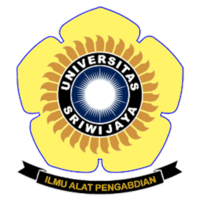Optimalisasi Lahan dengan Usaha Tani Tumpangsari Kedelai dan Jagung Pada Lahan Sawah Beriklim Kering Kabupaten Bima
Abstract
Mardian I, Suriadi A, Widiastuti E. 2020. intercropping of soybean and maize for land optimization on farming system in low lands with dry climate in Bima regency. In: Herlinda, S et al. (Eds.), Prosiding Seminar Nasional Lahan Suboptimal ke-8 Tahun 2020, Palembang 20 Oktober.pp. xx. Palembang: Penerbit & Percetakan Universitas Sriwijaya (UNSRI).
An intercropping farming system of soybean and maize was studied to determine to what extent effects of the system on growth, yield, income and land use efficiency. This study was conducted at Usaha Baru farmer’s group in Nggembe Village, District of Bolo, Bima Regency in 2019. The study was conducted in 1 ha land where 3 treatments were applied, namely soybean monoculture, intercropping of soybean and maize and maize monoculture. Plant spacing of 40x10 cm of Dena 1 variety of soybean at monoculture cropping pattern was applied. Intercropping pattern of soybean and maize with a ratio of 50%: 50%, with spacing of 20x30 cm and 40x35 cm, respectively. Monoculture of maize with plant spacing of 70x20 cm of Nasa-29 variety was applied. The parameters observed were agronomic performance, yield performance, data of farming input and output as well as land equality ratio (LER) and competitive ratio (CR) values. The results showed that the agronomic performance of the intercropping of soybean and maize was significantly different from monoculture. The yield performance showed a significant difference between the intercropping of soybean maize and monoculture system. The LER and CR value were 1.67 and 0.90 respectively. However, the income level of the intercropping system was higher than the monoculture of soybean and maize which is shown in the profit value of the intercropping was Rp. 15,350,260 and R/C 2.57 and B/C 1,57.
An intercropping farming system of soybean and maize was studied to determine to what extent effects of the system on growth, yield, income and land use efficiency. This study was conducted at Usaha Baru farmer’s group in Nggembe Village, District of Bolo, Bima Regency in 2019. The study was conducted in 1 ha land where 3 treatments were applied, namely soybean monoculture, intercropping of soybean and maize and maize monoculture. Plant spacing of 40x10 cm of Dena 1 variety of soybean at monoculture cropping pattern was applied. Intercropping pattern of soybean and maize with a ratio of 50%: 50%, with spacing of 20x30 cm and 40x35 cm, respectively. Monoculture of maize with plant spacing of 70x20 cm of Nasa-29 variety was applied. The parameters observed were agronomic performance, yield performance, data of farming input and output as well as land equality ratio (LER) and competitive ratio (CR) values. The results showed that the agronomic performance of the intercropping of soybean and maize was significantly different from monoculture. The yield performance showed a significant difference between the intercropping of soybean maize and monoculture system. The LER and CR value were 1.67 and 0.90 respectively. However, the income level of the intercropping system was higher than the monoculture of soybean and maize which is shown in the profit value of the intercropping was Rp. 15,350,260 and R/C 2.57 and B/C 1,57.
Keywords
intercropping, income, LER, maize, soybean
Full Text:
PDFArticle Metrics
Abstract view : 483 timesPDF - 1552 times
Refbacks
- There are currently no refbacks.

